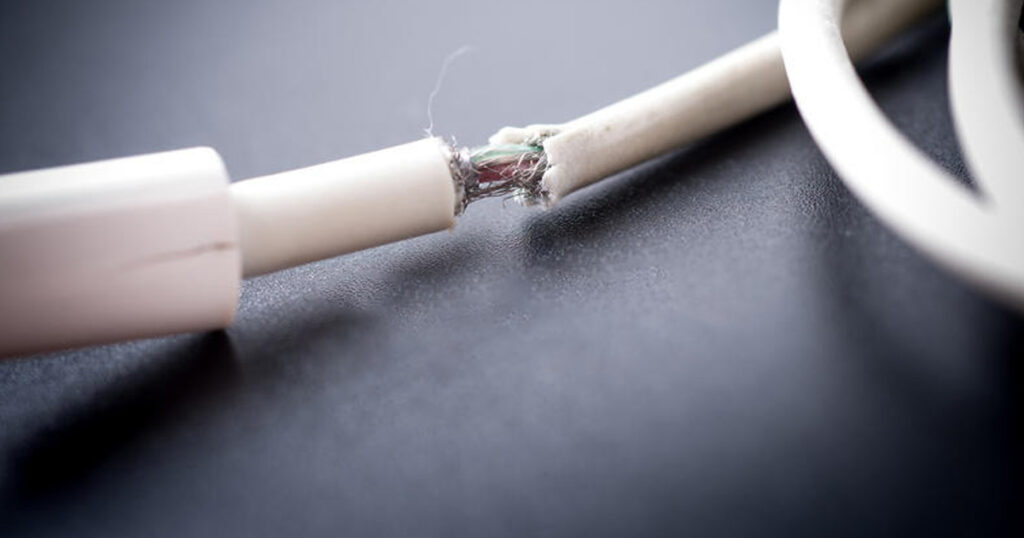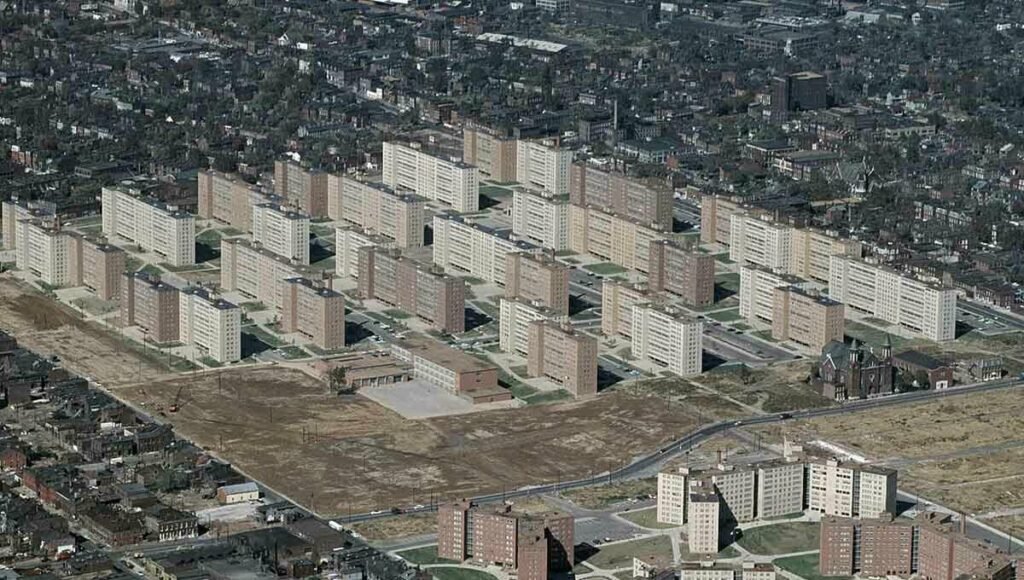
Pruitt Igoe: How Socialists Tried to Rebuild the USSR in the USA.
Pruitt Igoe: The story of how a socialist experiment in the USA turned into an epic fail.
After WWII, socialist ideology became relatively spread in some places across the USA and Pruitt Igoe is proof of that.
Authorities in one state decided to conduct a socialist-style development; they decided to use American taxpayer money to build social homes for those less well-off, in the lower echelons of society. It’s a popular viewpoint that the rich have been dominant for so long, that the poorest in society deserve their chance. We don’t have to look as far as North Korea, Venezuela, Belarus, or the USSR to find successful or failed socialist experiments.
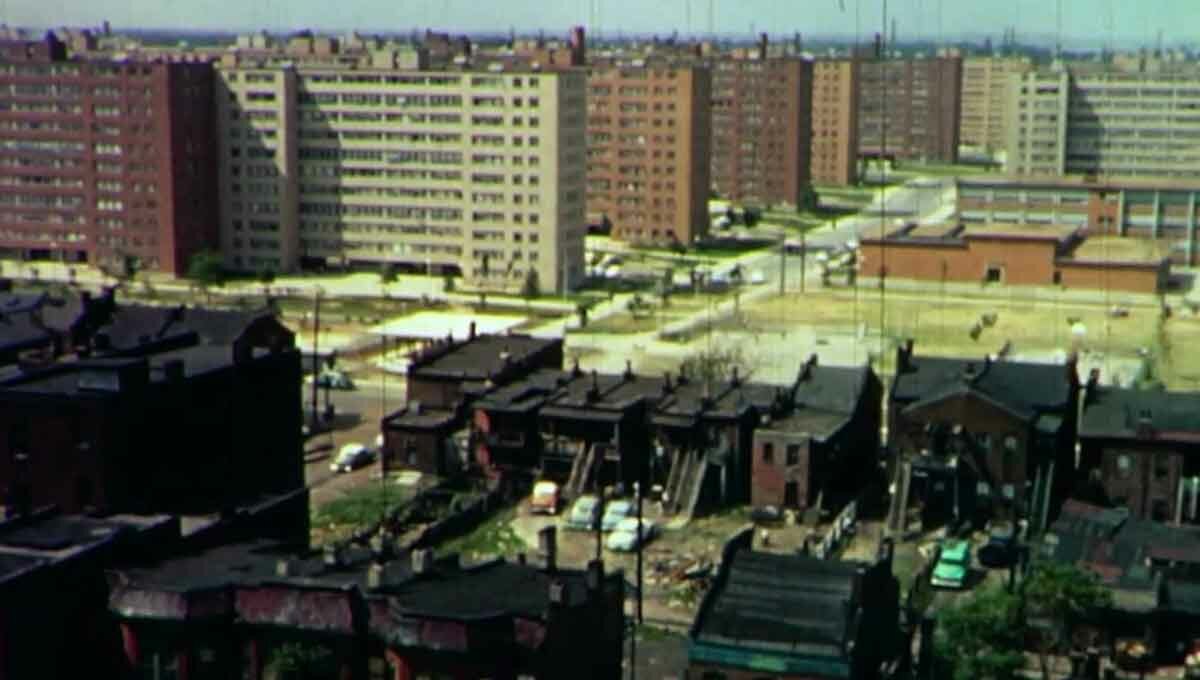
Neighbourhood Pruitt-Igoe in St. Louis USA.
Who build this apartment complex?
The Prutt-Igoe was a social housing complex in St. Louis, Missouri, USA. Designed in 1954, demolished in 1974, the sprawling complex consisted of 33 11-story residential buildings. It was designed by architect Minoru Yamasaki, who was made famous for designing the World Trade Centers in New York.
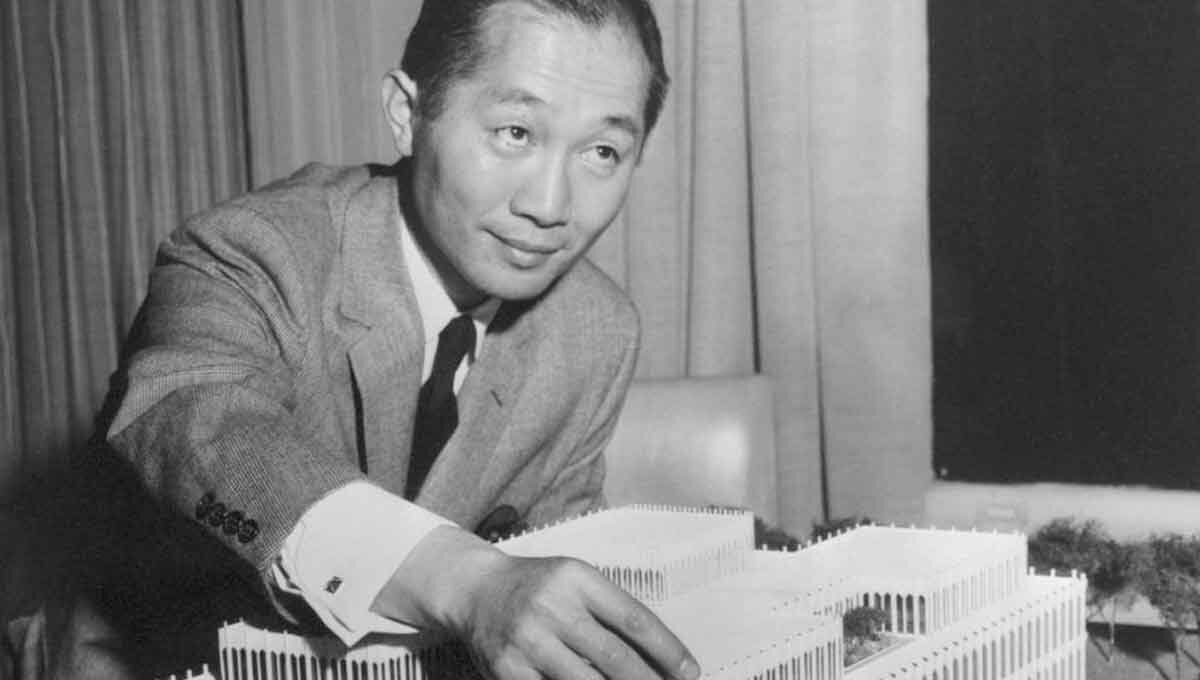
Minoru Yamasaki who designed Pruitt-Igoe in St. Luis.
Why it was build?
It’s well documented that post-World War II populations began to move away from urban areas and towards the suburbs. Young middle-class tenants needed somewhere to live. The city of St. Louis responded to this migration by knocking down small, dilapidated houses. They awarded Yamasaki a contract for building “Le Corbusier’s dream”, designed to accommodate 12,000 people, in their place.
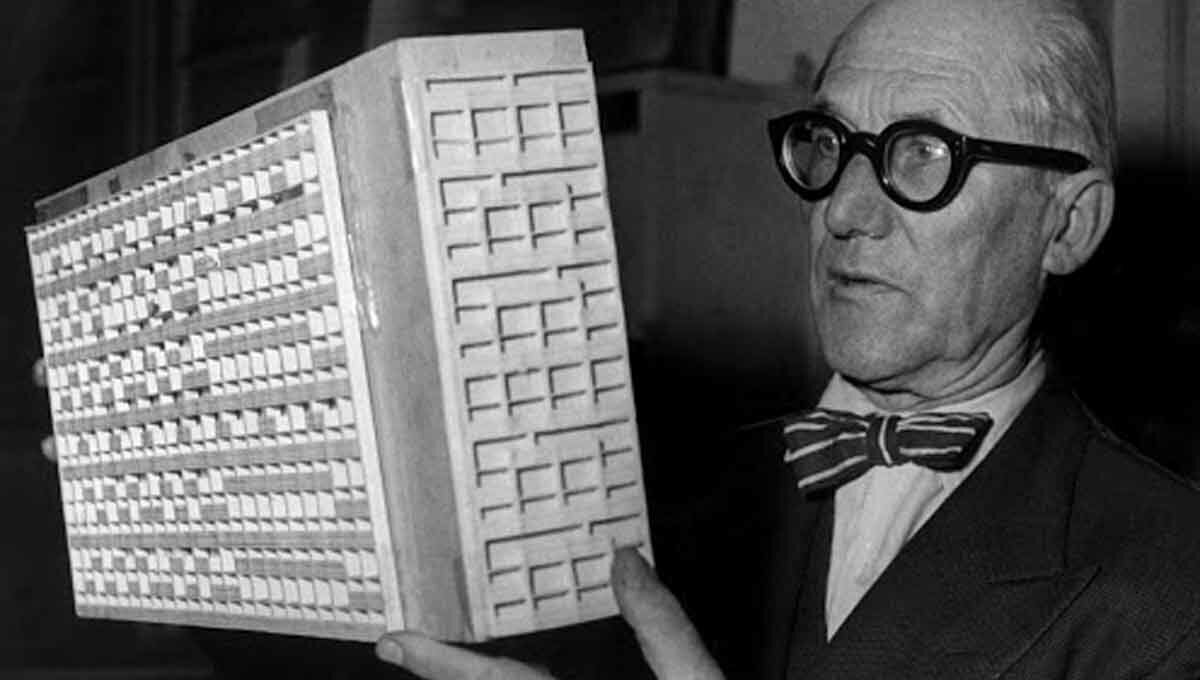
Le Corbusier, French-Swiss architect.
Yamasaki was heavily influenced by Le Corbusier and adhered to the functionalism, utilitarianism, and practicality that were the foundation of Le Corbusier’s design style.
This style of building has never been used in St. Louis before, but city officials were impressed by Yamasaki’s experience of building similar tenements in New York. Eventually, the project designers were awarded the Pulitzer Architecture Prize for the Prutt Igoe.
Architects wanted to build a paradise
The architect’s vision was to have a ‘city within a city’. At first, it was proposed to have a combination of buildings at different heights and for a different density of population; but this was rejected due to a lack of funding. The project was simplified, and the sole aim of it was to build as many housing units for the lowest price possible.
The buildings became the same and the number of infrastructure facilities was reduced to a minimum. Residential complexes, bearing little resemblance to the original sketches, were finally commissioned in 1955.
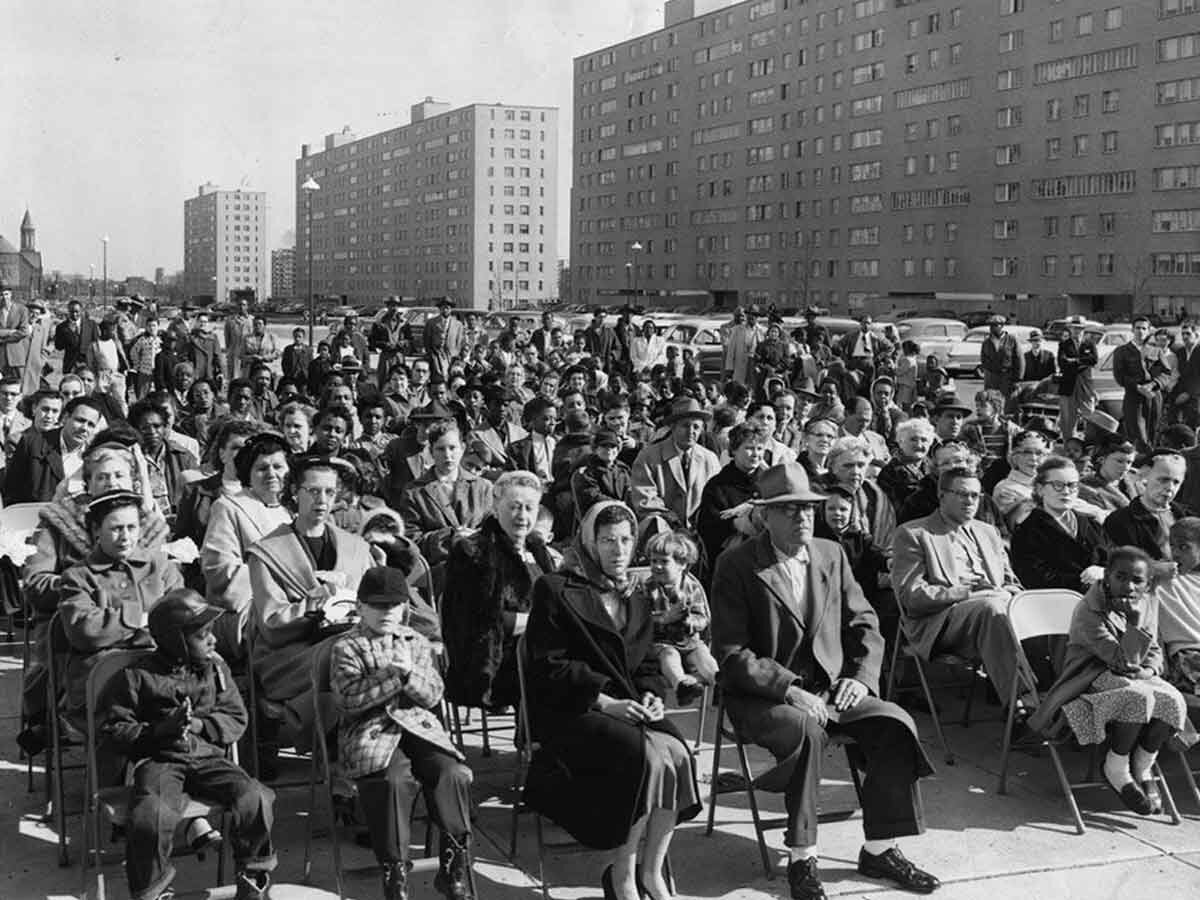
Opening of Pruitt-Igoe in 1955.
Each building had lifts that stopped at every three floors, and stairs that wound up the outside. On the first, fourth, and tenth floors, the stairs were united by wide ‘galleries’. It was presumed that these galleries would not only provide access to elevators and laundry facilities but that they would also become a public space for socializing and community building.
Pruitt Igoe was not finished
Playgrounds were considered too expensive and were never built, and the maintenance department rarely fixed any of the growing lists of problems that the complex had.
Fittings often broke down because of poor-quality materials, and the planned landscaping was non-existent. Residents also often complained about the presence of rodents and cockroaches.
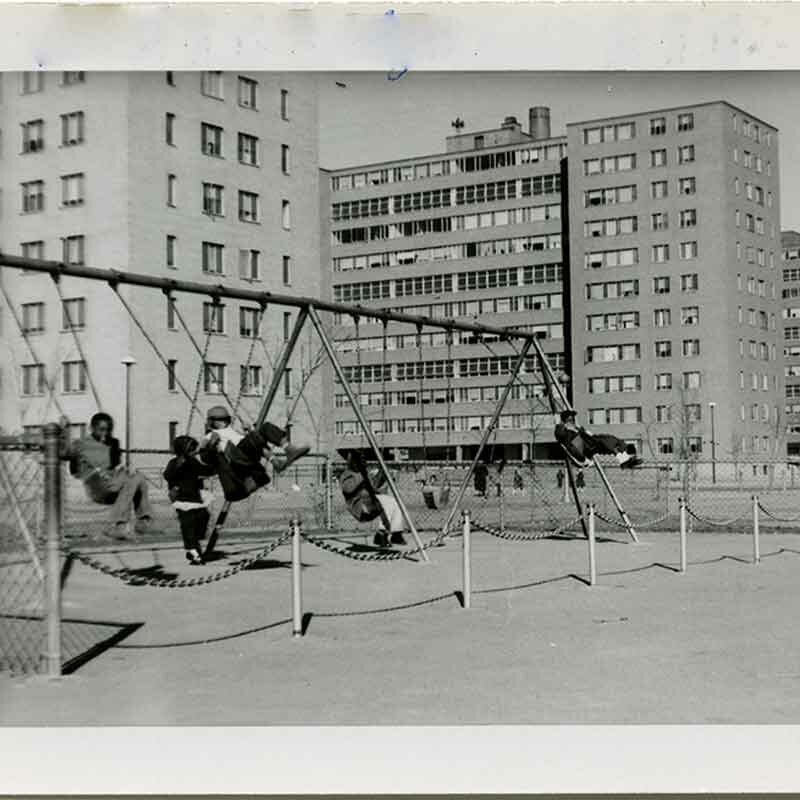
Swings on Pruitt-Igoes playground.
The original project was planned to have two separate, segregated parts: one for whites and one for minorities. In 1954, segregation was outlawed. For the first two years, the complex was home to a diverse mix of tenants. The complex became generally home for low-income minorities, and not long after became associated with poverty and crime.
How socialist paradise turned into hell
In 1964, city authorities tried to rehabilitate the Pruit-Igou micro-district with a $7,000,000 cash injection. They tried to align the structure of those who settled in the house because many of the problems arose from the social composition of the inhabitants.
But, after several unsuccessful attempts to improve the poor crime statistics that weighed the neighborhood down, in 1972 the decision was made to blow one of the tower blocks up. The rest followed two years later.
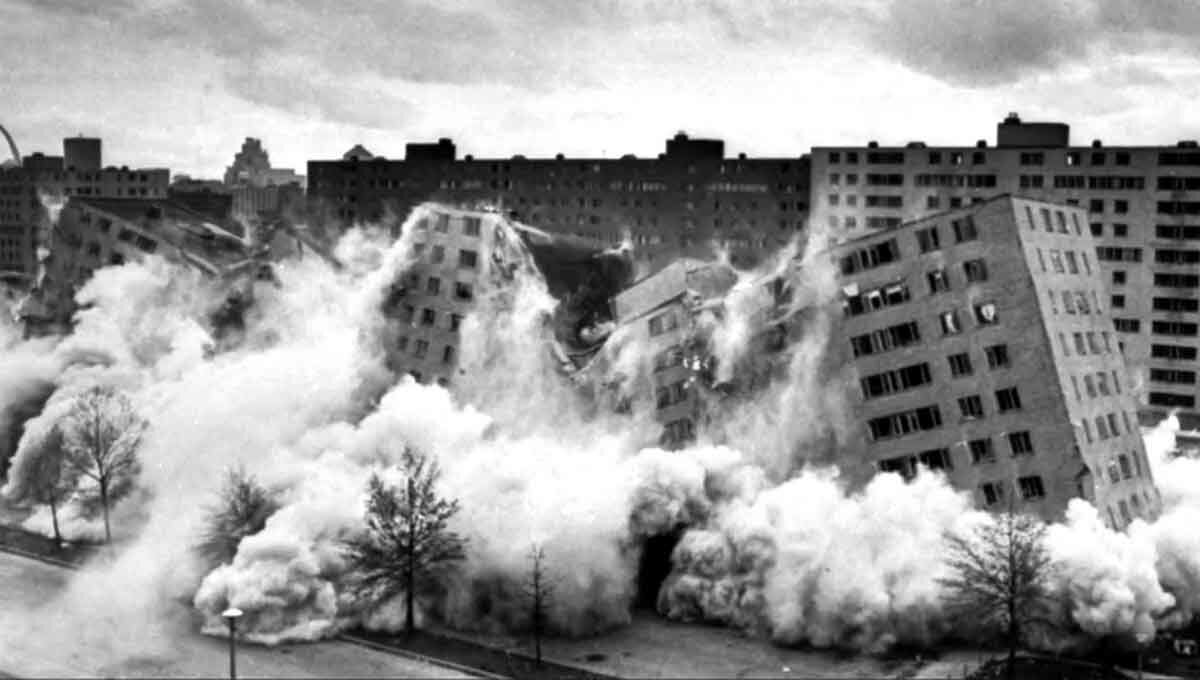
Destruction of the apartment complex.
The decline and destruction of the complex are immortalized in the 1983 film “Koianiscazzi”. Architects and historians have mythologized the failures of Pruitt-Igoe as the “death of modernism”.
They blamed the architects, Helmuth, Yamasaki, and Leinweber, for problems now known to be the result of difficult political and economic circumstances.
Minoru Yamasaki himself expressed confidence that the project had failed and did not mention it in his autobiography. Yamasaki did not live to see the destruction of his other famous brainchild.
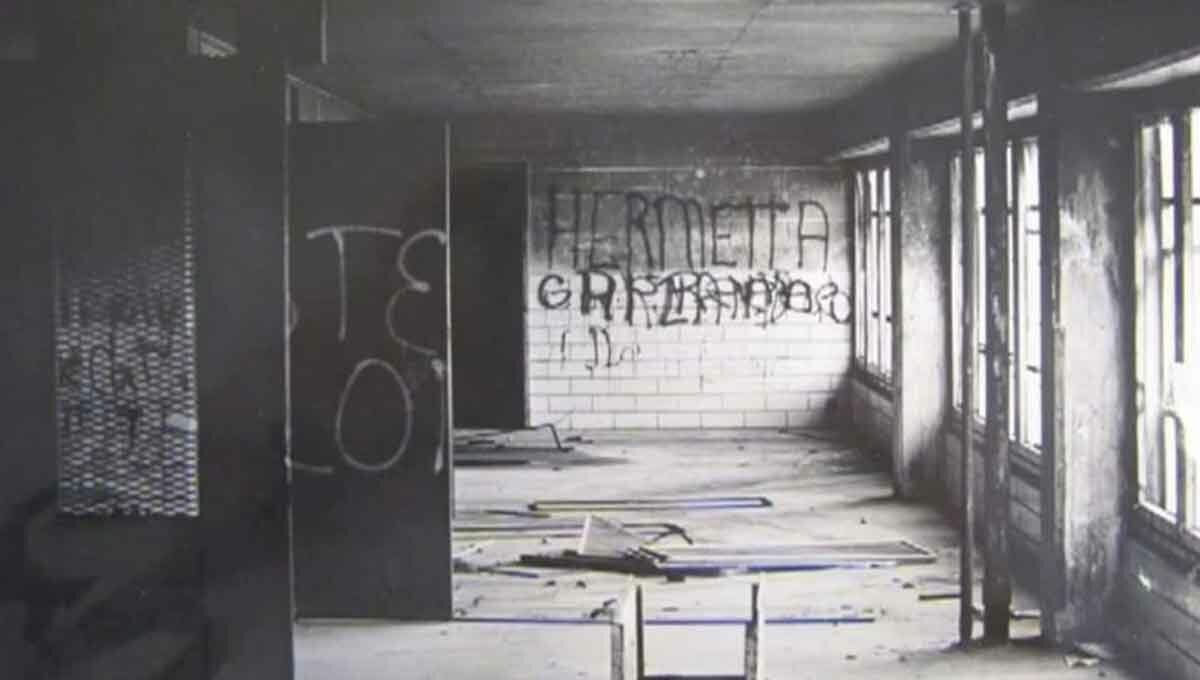
Gallery of Pruitt-Igoe in St. Louis, USA.
The destruction of Pruitt-Igou has become a symbol of the collapse of utopian, social ideas, and the soullessness of functionalism. A rational approach to building homes has all but failed to solve all the problems of society.
Read this articles.






